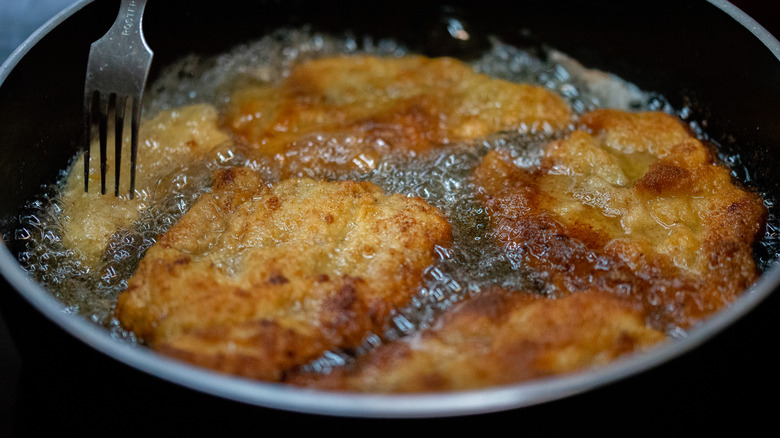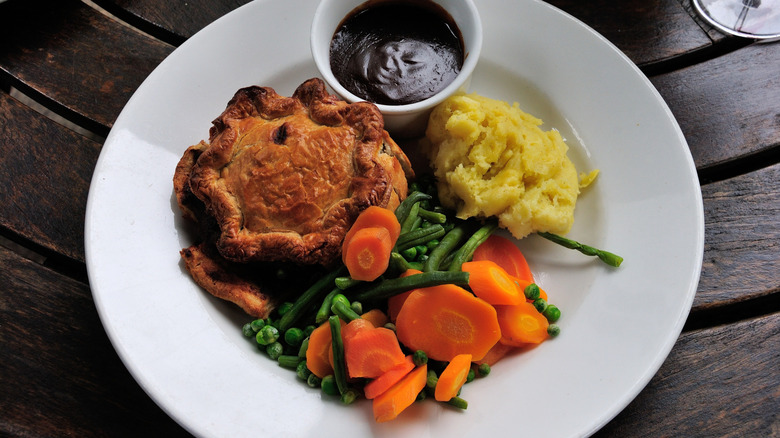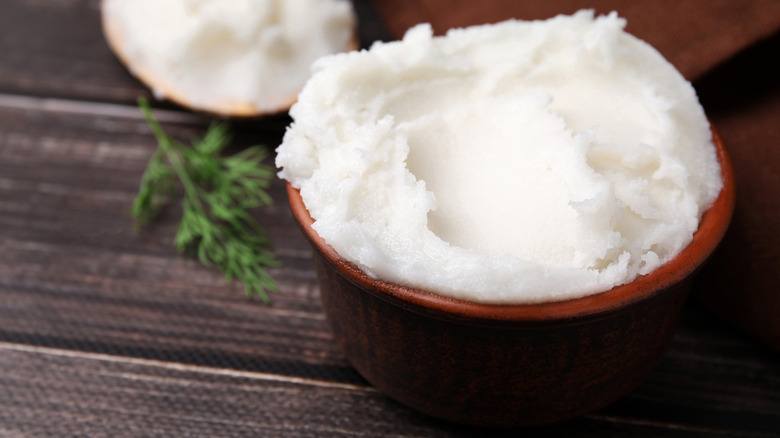Suet Vs Lard: What's The Difference?
If you've ever followed a recipe that mentions suet or lard, you might have wondered what the difference is between the two. You may have even asked yourself what the heck suet is in the first place. Lard is for sure the more common of the two, as most people have probably heard of lard at some point in life. Suet is a bit more of a specialty item. They're both animal fats, but they aren't interchangeable in the kitchen.
Suet is a firm, crumbly fat that comes from cows or sheep, and you find it in traditional British puddings or savory pies. Lard is the smooth, rendered fat from pigs that's widely used in baking and frying all over the world.
When you're considering whether to use suet or lard, remember that the two fats have different textures and uses. However, they both have the big perk of a high smoke point, so they can handle the heat — literally. That makes them excellent for frying, sautéing, and searing. You won't have to stress about them smoking up or taking on those unpleasant, acrid flavors during high-heat cooking. Suet works well in recipes that need structure, and lard's creamy texture makes it perfect for creating flaky pastries or frying foods. Suet is more niche in modern kitchens, but both fats have a long history of adding flavor and texture to dishes.
Suet is an underrated weapon in the kitchen
Suet is a unique type of animal fat that is sort of in its own lane as far as traditional baking and cooking goes. You get it from the hard fat around the kidneys of cows or sheep. One way that suet is a lot different from lard is that it doesn't smear easily, so you can use it any time you have a recipe that calls for a more defined but still tender texture. Think crusty pastries, steamed puddings, or the famous British suet crust pies.
One of suet's superpowers is that it has a pretty high smoke point (about 400 degrees Fahrenheit); it doesn't melt immediately in doughs and batters, which creates pockets of steam and ultra-flaky or fluffy textures. It's also excellent for savory recipes because its distinct flavor adds depth to meat pies and traditional dumplings. Rendered suet is also commonly sold in shredded form or as a solid block, so it's ready to be chopped or grated into recipes.
Outside of using it for culinary purposes, one cool aspect of suet is that it has a quirky reputation as a bird feeder essential. You can mix it with seeds, and you have yourself a great way to keep birds nourished during colder months. Even though suet might not be as common to use nowadays, it has unique properties that make it a great ingredient to have on hand.
Lard is a versatile kitchen workhorse
Lard is rendered fat from pigs, and it's a lot of people's go-to as a kitchen multitasker. It has a smooth, creamy consistency and mild flavor. Lard is different from suet because it doesn't stay firm at room temperature; instead, it melts easily, so it's great for frying, sautéing, and baking. Its ability to create tender, flaky pastries is why many bakers add lard to pie crust.
You'll find lard in many cuisines around the world, from tamales in Mexico to biscuits in the American South. It also has a high smoke point (370 degrees Fahrenheit), so you can fry foods to golden perfection without burning. Lard's mild flavor makes your dish taste better without overshadowing the other ingredients, like if you're eating a savory stew or Cheddar Bay Biscuit fried chicken.
In addition to being versatile, lard has seen a resurgence in popularity due to the shifting mindset to use as much of the animal as possible. There are a good amount of unsaturated fats in there too. Whether you're making cookies, perfectly searing pork chops, roasting vegetables, or frying doughnuts, lard offers unmatched versatility and ease of use, making it a must-have in any well-stocked kitchen.


